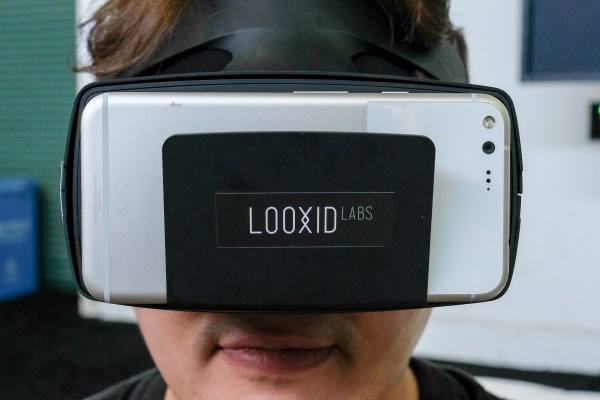Virtual reality is having a tough time breaching consumer markets and it’s not clear where the demand is exactly. But when it comes to research and analytics, gathering emotional responses could be huge to custom tailoring content and gaining important insights.
Looxid Labs, launching onstage today at TechCrunch Disrupt Battlefield, wants to bring brain waves into the VR equation.
There are a few companies that are doing the whole track your emotions in VR thing, but the products from VR unicorn MindMaze and demos from Samsung rely on tracking facial muscles and inferring overall emotions while others are using computer vision sensors to track your lips. Meanwhile Looxid Labs is using EEG partnered with eye-tracking to actually track your emotional responses using its proprietary algorithms that infer how you’re feeling.
EEG tech always seems to be a bit nebulous in what it can actually deliver in a product, but Looxid Labs isn’t rushing to consumer markets, instead they’re focusing heavily on research and analytics applications that can track insights based on your emotional reactions to VR experiences.
The startup’s product, LooxidVR, is a system to interpret all the sensory input it’s gathering. Their research kit and analytics product will allow tons of industries that have already shown interest in VR to more capably capture user reactions. For medical use cases surrounding pain management or physical therapy, tracking emotions has some readily apparent use cases. Detecting traits like confusion could be really important to educational and training apps, preventing important concepts from escaping users.
The close integration with the headset allows you to pinpoint what objects a subject was directing their attention towards and what the corresponding emotion was. The insights delivered are measure across three scales, interpreting where your current emotional state falls on happiness/sadness, dominance/submissiveness and excitement/depression.
Looxid wants to embrace the consumer market, but it isn’t focusing on a major entry in the near future. They’re working on a developer kit targeting early adopters in the consumer space. Emotion-tracking has been something a lot of social VR applications have been interested in, but the current hardware doesn’t have an integrated solution. An EEG cap might not make the most sense as a mass market option, but Looxid has integrated a less robust system into the head strap of the developer kit.
Looxid has some challenges ahead of it if it wants to approach the consumer market heavily. Integrating new VR input tech with OEMs can be incredibly difficult and startups can sink a lot of money into trying to build of a developer ecosystem large enough to get traction early-on. There is less risk — and less reward — in ignoring consumers and focusing on research but the needs of that community align a lot more with where Looxid Labs is showing its strengths.
[gallery ids="1543633,1543630,1543629,1543626,1543624,1543623"]
